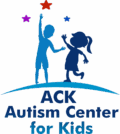Introduction
Ten Benefits of Music and Movement Therapy for Children with Autism Music and movement therapy is an effective and engaging approach for supporting children with autism. Through structured therapeutic music sessions, children can experience a calming and relaxing environment that helps them cope with daily tensions. This therapy integrates rhythm, sound, and physical movement to promote cognitive, emotional, and social development. In this article, we explore ten significant benefits of music and movement therapy for children with autism and how it contributes to their overall well-being.

1. Enhances Communication Skills
Children with autism often struggle with verbal and nonverbal communication. Music therapy provides an alternative way for children to express themselves. Songs, rhythmic patterns, and interactive music activities encourage vocalization, improve articulation, and strengthen the connection between speech and movement.
2. Supports Emotional Regulation
Therapeutic music sessions create a structured environment where children can explore emotions safely. Music helps children process feelings of anxiety, frustration, or excitement, giving them tools to self-regulate their emotions. Calming melodies and repetitive rhythms help soothe sensory overload, reducing stress and anxiety levels.
3. Improves Social Interaction and Engagement
Music and movement therapy fosters peer interaction by encouraging group participation. Children engage in turn-taking, mirroring movements, and collaborative activities, which improve social skills and build connections with others. Dancing and playing instruments together help children understand nonverbal cues, facial expressions, and social norms.
4. Develops Motor Coordination and Physical Skills
Autism can affect motor coordination, making it difficult for children to control their movements. Dance therapy and structured movement exercises enhance gross and fine motor skills. Activities like clapping, drumming, and dancing improve muscle strength, flexibility, and coordination, helping children gain better control over their bodies.
5. Boosts Cognitive Functioning
Engaging in rhythmic activities stimulates brain function and supports cognitive development. Studies show that music activates multiple brain regions, enhancing memory, problem-solving, and attention span. Music therapy also encourages pattern recognition, sequencing, and auditory processing, which are essential cognitive skills for learning.
6. Encourages Creativity and Self-Expression
Music and movement provide a nonverbal outlet for children to express their thoughts and emotions. Through dance and music improvisation, children with autism can communicate in ways that words may not allow. This creative freedom fosters self-confidence and helps children develop a sense of identity and self-awareness.
7. Increases Sensory Integration and Body Awareness
Children with autism often experience sensory processing difficulties. Music and movement therapy helps integrate sensory input by engaging auditory, tactile, and proprioceptive senses. Slow, rhythmic movements can calm overstimulated children, while dynamic activities stimulate under-responsive sensory systems, promoting balance and awareness.
8. Promotes Behavioral Improvements
Music therapy can help reduce repetitive and self-stimulatory behaviors by offering structured, engaging activities. By redirecting energy into purposeful movement and music-making, children can develop more adaptive behaviors and self-control. This can lead to improved focus, decreased aggression, and increased participation in social and academic activities.
9. Strengthens Parent-Child Bonds
Parents and caregivers can participate in music and movement sessions, strengthening their connection with their children. Shared musical experiences create positive interactions, improve emotional bonding, and enhance communication between parents and children with autism. Engaging in music at home also reinforces therapy benefits and encourages continued progress.
10. Provides a Calming and Relaxing Experience
Children with autism often face daily challenges that lead to high levels of stress and anxiety. Music therapy offers a safe and soothing environment where children can relax and feel comforted. The structured yet flexible nature of therapeutic music sessions allows children to feel secure while exploring new sensory experiences in a controlled manner.
Additional Considerations: Autism and Dance Therapy
Many people searching for autism interventions are interested in:
- Autism Movement Therapy Certification: A professional training program for therapists and educators to use movement-based therapy effectively.
- Dance Therapy for Autism Near Me: Local dance therapy programs designed for children with autism.
- Autism Movement Therapy Course: Online and in-person courses that teach dance and movement techniques for autism support.
- The Effects of Dance Movement Therapy for Children with Autism Spectrum Disorder: Research studies exploring how dance benefits children with autism.
- Autism and Dance: How dance programs cater to children with autism.
- Dance Class for Kids with Autism: Specialized dance programs that offer sensory-friendly experiences.
- Do Autistic Toddlers Dance to Music? Many toddlers with autism respond to music positively, and dance can be an effective form of engagement.
- MovementWorks: A structured movement program designed for children with special needs, including autism.
Conclusion-Ten Benefits of Music and Movement Therapy for Children with Autism
Music and movement therapy is a powerful tool for supporting children with autism. By enhancing communication, improving motor skills, regulating emotions, and fostering social connections, this therapy contributes to a child’s overall development. At Autism Center for Kids, we integrate music therapy into our programs, ensuring children receive the support they need in a fun, engaging, and therapeutic environment.
If you’re interested in learning more about music and movement therapy for children with autism, contact us today to explore available programs in your area.
Discover more from Autism Services and therapy for Kids by counseling
Subscribe to get the latest posts sent to your email.


You must be logged in to post a comment.